
The top ten medicinal herbs for the garden: how to grow and use healing plants
In an ideal world, we would each have inherited the ability to conjure a personal list of essential garden herbs, tailored to our particular climate and health concerns. As it is, many of us are re-learning the traditional art of the apothecary garden—a place where beauty, medicine, and bees reign supreme.
My hope is that the information below inspires you, as a jumping board of sorts, to create your own unique dream herb garden. I chose each plant based on its ease of cultivation and medicinal usefulness and versatility. But bear in mind, there are many more herbs out there to choose from!
If this article merely gets your green thumb tingling, I highly encourage you to visit our Medicinal Herb Gardening Hub, which is a lush garden in its own right—a virtual library filled with herbal gardening wisdom and resources. You’ll find cultivation tips and medicinal write-ups for dozens of herbs, featurettes on small-space and urban gardening, a roll call of medicinal seed and nursery suppliers, and a step-by-step guide to bringing your own dream garden to fruition.
1. Calendula, Pot Marigold (Calendula officinalis, Asteraceae)
Calendula is one of the most familiar and beloved herbs, earning our affection with its cheerful golden flowers. The “petals” (technically known as ray florets) are edible and the whole flower is an important medicinal herb for addressing skin conditions.
Calendula flowers (whole; including the resinous green bracts) are incorporated into topical oils and salves for healing wounds, rashes, burns, and dry skin. This plant holds an interesting claim to fame—it is the herb most likely to be found in diaper rash ointments and creams. For more on using calendula topically, see my recipes for Calendula Oil & Salve and Calendula Poultice.
Internally, calendula flowers are used in teas, tinctures, and broths as an antifungal, antibacterial, lymphagogue (stimulates the lymphatic system), emmenagogue (stimulates the menses), and digestive anti-inflammatory. It is one of my favorite remedies, along with meadowsweet (Filipendula ulmaria) and licorice (Glycyrrhiza glabra), for GERD (gastroesophageal reflux disease) and peptic ulcers—see my recipe for Herbal Digestive Calendula Tea.

-Calendula officinalis flower
I plant calendula close to my front porch so I can enjoy the blooms, and watch the hum of pollinator activity all summer long. Calendula prefers full sun and average garden soil. It is easily grown from seed—you can direct sow or start early in pots; the seedlings are somewhat cold tolerant.
Calendula does well as a container plant, hence the common name “pot marigold.” Plant 10-14 inches (25-35.5 cm) apart; grows to 18 inches (46 cm) tall. Calendula’s sticky flowers must be picked every two to three days to ensure a longer flowering season. Calendula will usually self-sow unless you mulch heavily. It is typically grown as an annual, but can be cultivated as a short-lived perennial in warmer climes (Zone 8-10).
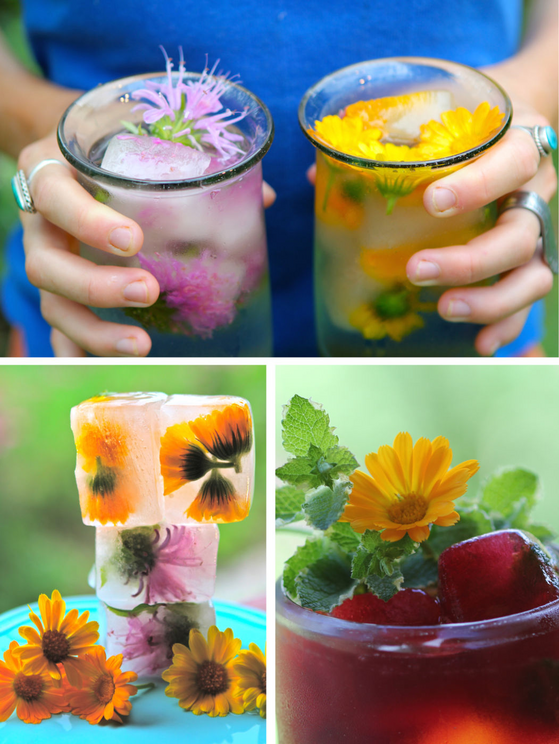
Calendula ice cubes and calendula garnish
2. Motherwort (Leonurus cardiaca, Lamiaceae)
Motherwort is one of the easiest herbs to grow and is a highly versatile medicinal. It is one of my favorite remedies for anxiety and stress. It is taken as a tincture or tea to lessen pain, such as: headaches, menstrual cramps, and muscle sprains and aches. I will add that motherwort is quite bitter, so I often recommend it as a tincture over tea.
It is an ally for many people who experience menopause for easing hot flashes and hormonal-induced irritability. Motherwort is also used in childbirth to help strengthen contractions; it is the only herb I used giving birth to my daughter! Finally, motherwort fully lives up to its name in helping to increase parental patience. Many parents find that motherwort softens the edginess brought on by sleep deprivation, endless laundry and dishes, and uppity wee folk.

Motherwort
Motherwort is a short-lived herbaceous perennial, plant it in full sun to part shade. Hardy to Zone 4. Plant 18-24 inches (46-60 cm) apart; grows 3 to 5 feet (.9-1.5 m) tall. The seeds can be stratified (placed in damp sand in the refrigerator) for two weeks before planting, and will generally germinate in one week if placed in a warm spot, such as a greenhouse or sunny window. You can find a detailed guide on stratification in my article on Cultivating Woodland Herbs.
In many climates, motherwort will self-sow enthusiastically and can be quite weedy, so you may want to plant it where it can do its thing without stepping on anyone’s toes. Motherwort easily transplants; consider asking a neighboring herbalist if you can dig up any extra plants. Harvest the leaves and flowers at the height of its bloom—but be careful; this plant is prickly!
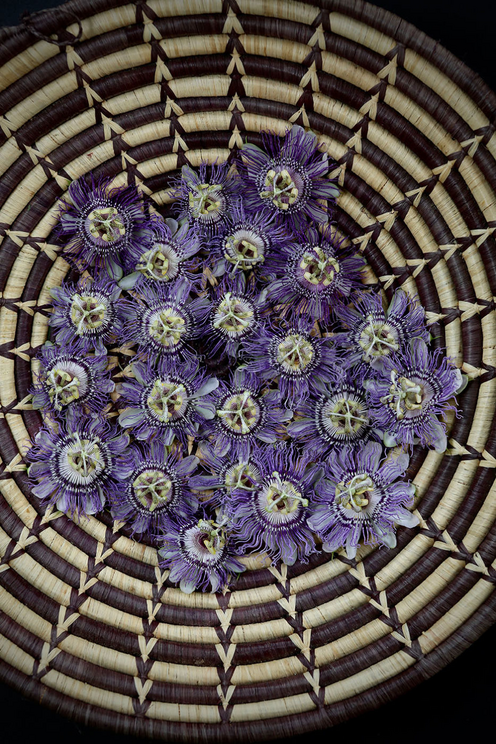
Passionflower harvest (Passiflora incarnata)
3. Passionflower (Passiflora incarnata, Passifloraceae)
Passionflower is a native vine to the southeastern United States, with gorgeous flowers and interesting foliage. It is weedy in much of its range and fairly easy to grow elsewhere, especially if given a wall or trellis to climb. The leaves and flowers are an important nervine sedative and are used to help promote sleep and alleviate pain, such as menstrual cramps and headaches.
Passionflower is a short-lived, perennial herb that will clamber gregariously over arbors and fences. Space plants 3 feet (.9 m) apart and trellis—they can climb 5 feet (1.5 m) or more by the end of summer! Passionflower loves full sun, and will bloom more profusely when situated to bask in the solar rays, especially if you live further north. If you live in a hot climate, consider planting passionflower where it will receive some shade by mid-afternoon. Acclimated to warmth, passionflower is only hardy to zone 6 and is highly frost tender. Mulch heavily in the fall to help it overwinter.
Plant passionflower in well-drained to average garden soil. Seeds will germinate more easily if you first scarify them by rubbing each one between sandpaper until you see a pale inner tissue emerge within the darker seed coat. I also recommend stratifying the seeds by placing them in damp sand in the refrigerator for one to two months (see these links for more on scarification and stratification). Be patient, sometimes it may take months for passionflower seeds to sprout, and germination may not happen all at once. The use of bottom heat, planting in a warm greenhouse, or sowing seeds in late spring will all enhance germination.
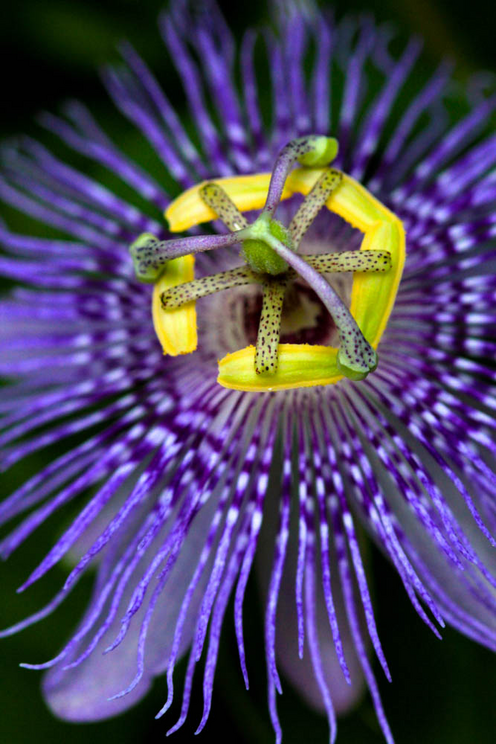
Passionflower
Passionflower will spread throughout the garden if it’s happy, which may make you happy, or not, depending on how big your garden is. It’s easy enough to pull up any runners emerging in inopportune locations, and either transplant them or give them to your uptight neighbor. And then just when you think you cannot contain the vines’ exuberance, and begin to see it as a nuisance, it will up and die from heartache. Actually, passionflower is just a short-lived perennial, so no need to take it personally—you may simply need to replant it after three years or so.
The stems, leaves, and flowers can all be gathered for medicine, and used fresh or dried in tea or tincture form.
4. Echinacea or Purple Coneflower (Echinacea purpurea, Asteraceae)
Purple coneflower is one of the most popular garden ornamentals with its showy purple flowers that attract all manner of butterflies and bees. Not only is it gorgeous, it’s easy to grow—echinacea is a decidedly unfussy plant, withstanding drought, disease, and insect infestations. Purple coneflower’s (another name for echinacea) roots, seeds, and fresh flowers are all medicinal, and can be made into a tingly tasting, immune-stimulating tea or tincture.
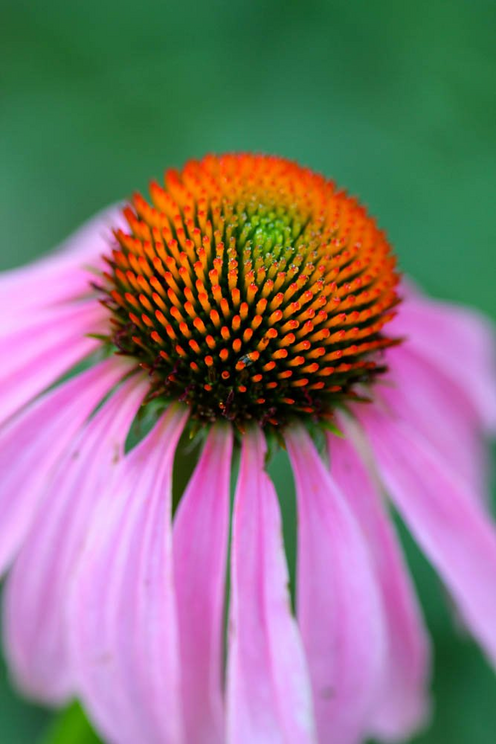
Echinacea is an herbaceous perennial, coming back to the garden year after year. Plant in full sun for the best flower production, 1-2 feet (30-60 cm) apart; grows to 3-4 feet (.9-1.2 m) tall. Echinacea purpurea is the easiest species of echinacea to grow in most garden soils, although Echinacea angustifolia is a highly prized medicinal to many herbal gardeners.
Sow seeds in trays or directly into the ground in early spring. Expect germination within 2-3 weeks. To improve the germination rate, you may cold condition (stratify) the seeds for two weeks prior to planting. Echinacea will begin flowering in its second year, and will be two or three years old before the roots are ready to harvest. Echinacea seeds are relished by goldfinches and will self-sow if left on the plant over winter.
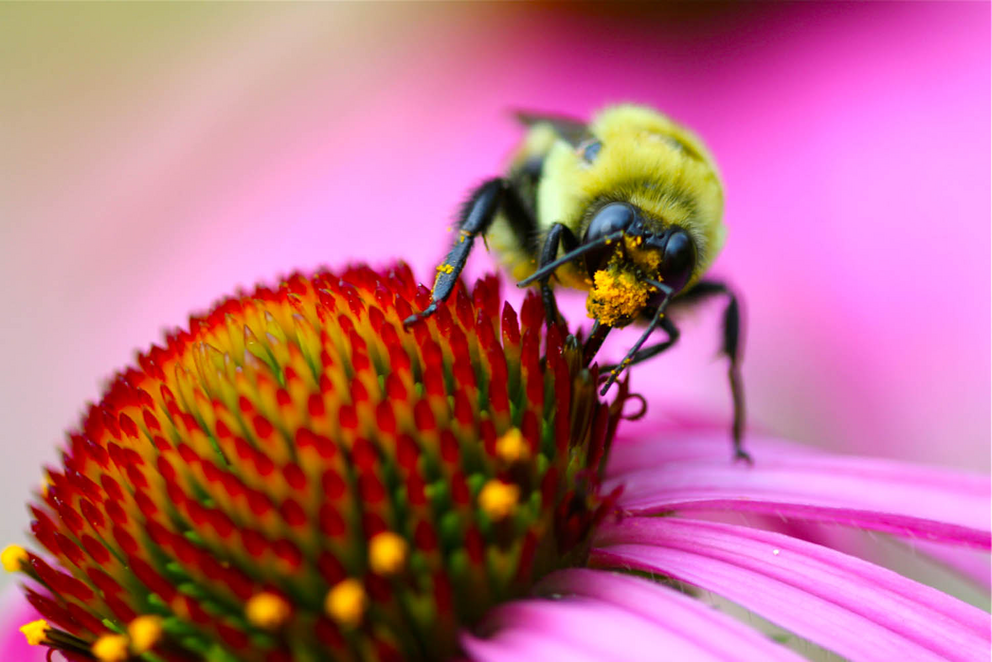
Echinacea purpurea
5. Holy Basil, Tulsi (Ocimum tenuiflorum syn. O. sanctum, Lamiaceae)
This close relative of common basil is native to India, Sri Lanka, and Malaysia, and has gained recent popularity as a tasty herbal tea. Holy basil is highly aromatic and antimicrobial; its leaves and flowers are used as a medicinal tea for colds, coughs, asthma, bronchitis, sinusitis, headaches, arthritis, diabetes, stress, and anxiety. Its adaptogenic effect offers an uplifting energy and helps with mental clarity and focus. In the kitchen, the fresh leaves can be added to salads and are used as a more pungent version of basil. Holy basil pesto is divine!
Tulsi is a perennial herb in Zones 10 and warmer, elsewhere it must be grown as an annual. However, it may self-seed prolifically even in cooler climates! Plant holy basil in full sun in average to moist garden soils, space 1-1.5 feet (30-45 cm) apart, grows 1-2 feet tall (30-60 cm).
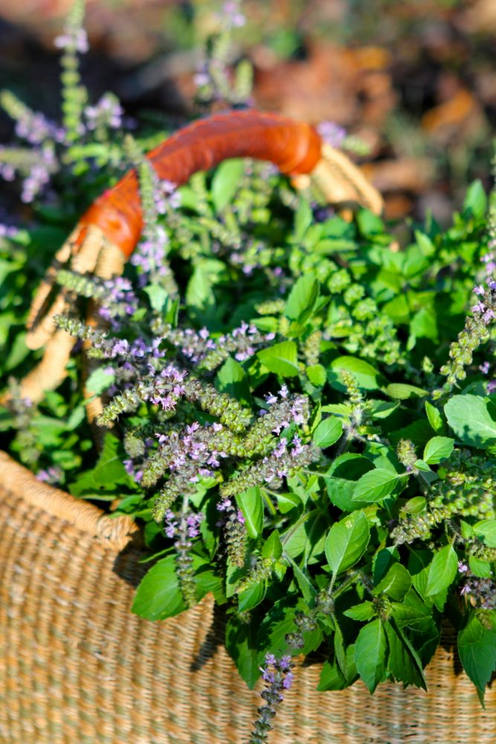
Tulsi harvest
Holy basil is easy to grow from seed, but take care not to plant the seeds too deep (they’re tiny). If you want a head start on the growing season the seeds will germinate better with bottom heat. If your greenhouse gets too cold at night, tulsi will be slow to sprout, and slow to grow. For this reason, I recommend planting outside after the danger of frost has passed. Holy basil may appear puny at first, leaving you to wonder if it has some botanical failure-to-thrive syndrome—perhaps you spoke too harshly with it when you were transplanting it—but do not go to that dark place of plant parent guilt. When the days grow longer and the nighttime temperatures warm, it will take off!
Several harvests can be obtained in one year: simply cut back the mature plant to 8 inches and it will re-grow quickly. As with culinary basil, cutting back the early flowers helps the plant to fill out and promotes more vegetative growth.
6. Meadowsweet, Queen of the Meadow (Filipendula ulmaria, Rosaceae)
With billowy clusters of creamy flowers that reign over ferny leaves, this European wetland herb certainly is deserving of its moniker: queen of the meadow. The flowers are quite attractive and are traditionally used to flavor meads; hence its former name meadwort. You can also make an herbal simple syrup with meadowsweet, sassafras (Sassafras albidum) root, black birch (Betula lenta) bark, and a touch of cloves (Syzygium aromaticum) and add it to sparkly water to make a homemade root beer soda.
The leaves and flowers have a pleasant wintergreen aroma and flavor, and are used internally for inflammation, fevers, heartburn, and peptic ulcers. Most people, including finicky children, love the tasty tea. Meadowsweet is a wonderful tonic for arthritis with its anti-inflammatory salicylates. It is naturalizing in the northeastern United States and can spread on its own from seed.
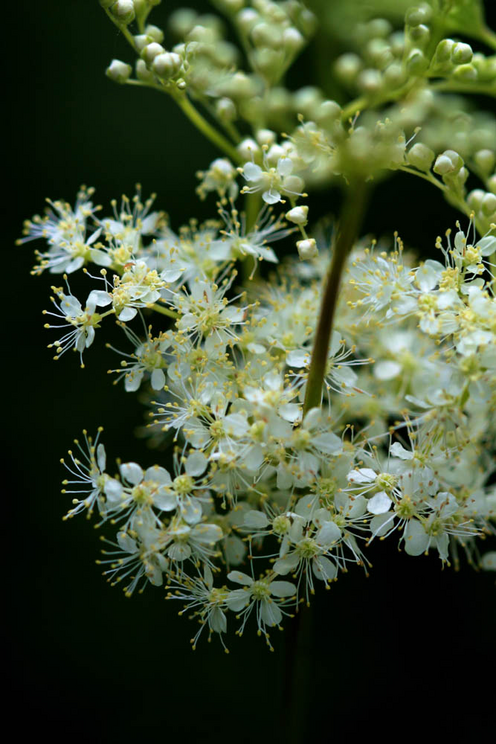
Meadowsweet
Meadowsweet is a hardy perennial in Zones 2-8, growing to 4 feet (1.2 m) tall and 2.5 feet (76 cm) wide. Plant in full sun or part shade, but note that moisture is beneficial—a wet meadow, streamside or the edge of a pond are all perfect spots for meadowsweet. If you haven’t such a spot, try planting it in a low dip in the garden and water it during drought. If you live in a southern climate, meadowsweet will be happier with a little afternoon shade and wet feet. In cooler climates, meadowsweet will tolerate more sunshine and drier soils, and even regular garden soil will nurture the growth of beautiful, healthy plants.
It is much easier to grow meadowsweet by root division than by seed, which requires a complicated stratification regime. Any little piece of the root will take hold, and grow a new plant. See my article on Root Division for more details.
Harvest meadowsweet when it is beginning to bloom by cutting the flowering stalks close to the base of the plant. You can hang these longer stems in bundles, placing a cloth underneath to catch any blossoms that fall during the drying process. Harvest the basal leaves at this time as well by giving half the plant a haircut. It will send forth a flush of new leaves, and you can harvest them a second time in the fall, before the first frost.
7. Jiaogulan, Southern Ginseng, or Sweet Tea Vine (Gynostemma pentaphyllum, Cucurbitaceae)
Jiaogulan is a popular folk herb in Southeast Asia where it is grown as an affordable substitute for ginseng (Panax spp., Araliaceae). It is gaining popularity in the Western world, where it is used as a tonic for longevity and vitality. The leaves are brewed into a medicinal tonic tea for anxiety, stress, depression, high blood pressure, and high cholesterol. This vine is an easy-to-grow adaptogenic tonic, which contains some of the same compounds (ginsenosides) found in Asian and American ginseng.
Sweet tea vine is actually quite bitter and contrary to its name, has a flavor reminiscent of ginseng with mild soapy undertones. As you are likely aware, sweet tea (black tea with copious amounts of white sugar) is the beverage of choice for many southerners. When I had my herb nursery, well-dressed ladies would inquire, with a southern syrupy drawl, about “sweet-tea” vine, thinking they had hit the jackpot—a sweet tea they could grow themselves.
Jiaogulan
Southern ginseng is an herbaceous perennial vine hardy to 10 degrees F (-12 degrees C); it grows 4 inches (10 cm) tall by indefinitely wide and prefers part shade and moist rich soil. Jiaogulan will spread vigorously by runners and can become a troublesome weed if consumption does not outpace proliferation. In this light, it makes a beautiful container plant.
I recommend growing jiaogulan by division, as seeds are not readily available. It can be hard to come by; see the resource section below for nurseries that carry it.
Here is a video of Joe Hollis, of Mountain Gardens, talking about Jiaogulan. Joe is likely the person most responsible for jiaogulan’s recent popularity as a garden medicinal in the United States.
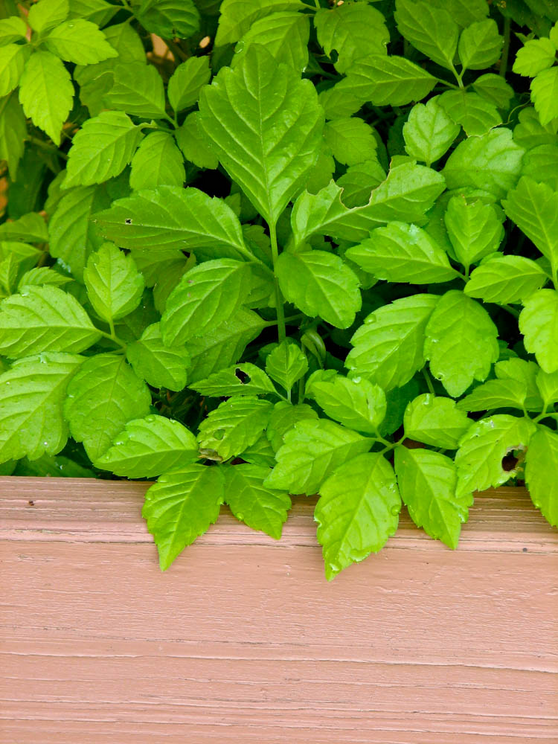
Jiaogulan growing as a potted porch plant
8. Spilanthes, Toothache plant (Acmella oleracea, Asteraceae)
This striking plant has golden, globe-shaped flowers with a red center, leading one seed company to market them as “eyeball plant.” Spilanthes is an interesting herb to behold and to taste! It is one of the strongest sialagogues (saliva-promoters) I know; even a tiny nibble from one of the flowers will set your mouth to drool. The tingly numbing sensation affords relief to toothaches, and is used in many tooth and gum formulas, as it is antimicrobial, stimulating, and acts as an oral anodyne.
All the aboveground parts are medicinal, and can be chewed fresh in moderation or made into a tincture. I often add it to formulas with echinacea as an immune stimulant for augmenting the body’s internal defenses against the common cold and flu.
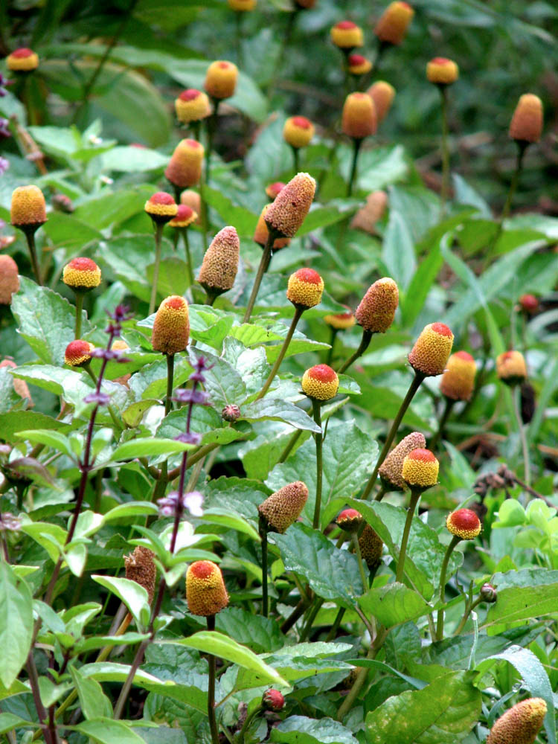
Spilanthes
Spilanthes is one of the easiest to grow medicinal herbs, and kids absolutely love it! This herb is grown as an annual, and will do well in average to rich soil and full sun. Be sure to water during dry spells. Spilanthes is a bushy, low-growing herb that can form a beautiful, succulent cover over the ground. It will rarely exceed 1 foot (30 cm) in height, and should be spaced 1 foot (30 cm) apart.
Direct sow seeds after danger of frost has passed or sow in the greenhouse for a head start. Toothache plant easily transplants and will self-sow if you don’t mulch too heavily. The self-sown sprouts take their time coming up—I don’t usually see them until June here in the southern Appalachians.
You can harvest the plants a few times during the growing season—cut the plants back to 6 inches (15 cm), and if there’s still time left before a frost, they will regrow nicely. One to two plants will yield over a quart of tincture. Protect the plants from slugs, as they will devour it—slug candy, indeed!

9. Stinging Nettles (Urtica dioica, Urticaceae)
Nettles is a highly revered, nutritious spring green, eaten steamed or in soups and stir-fries. The sting disappears when the leaves are cooked or dried. The greens and tea of nettles are high in minerals, vitamins, and chlorophyll; namely Vitamin A and C and calcium, potassium, magnesium, and iron. The leaves and seeds are used medicinally in teas and foods for allergies, arthritis, and as a kidney tonic.
Few herbs are so highly useful in the garden as nettles, if placed wisely in the landscape. It is considered a perennial vegetable—it does not need to be planted from seed each spring, but comes back from the roots year after year, making it less energy-intensive to cultivate than many annual crops.
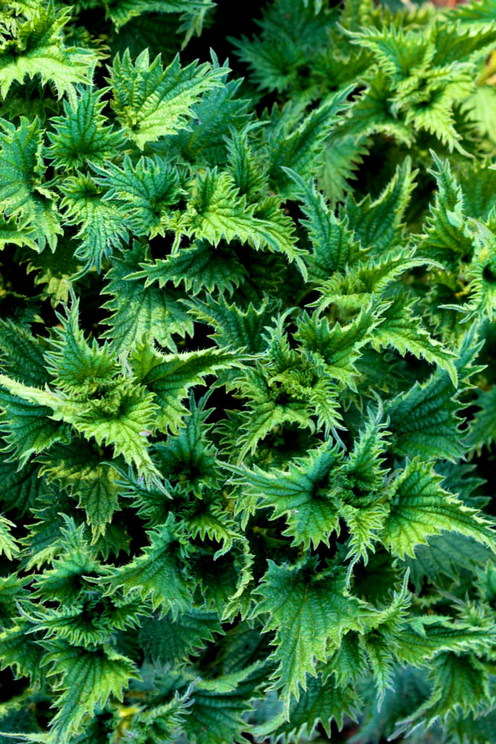
Nettles
Nettles is a generous herb—it will spread prolifically by runners; plant it out of the way or inside a semi-buried barrier. Try planting nettles in a wet meadow (away from human activity) or on an old compost or manure pile. In some locales it will spread by seed, making containment challenging. Nettles grows 3-4 feet (.9-1.2 m) tall by indefinitely wide, and prefers full sun to part shade and rich moist soil. Zones 4-8.
Fresh nettle shoots emerge in the earliest spring; you can continually harvest the tender new growth with scissors and it will regrow, allowing for multiple harvests from the same patch. Gather nettles before they flower. Consider wearing thick clothing and using leather gardening gloves. I recommend a scythe or similar tool for large-scale harvesting, and kitchen scissors or pruners for smaller yields. Want to see a nettle harvest in action? Join Deb Soule of Avena Botanicals over on YouTube.
Stinging nettles are dynamic accumulators—a term used to describe plants with the ability to mine nutrients (such as N, K, P, Ca) from deep in the soil. These nutrients are concentrated in their leaves, and then released into the soil when the plants die or lose their leaves. Nettles can be added to compost or used as a fertilizing mulch. Many gardeners make “tea” out of nettles by soaking the leaves in a bucket until fermentation occurs—the “tea” can then be used to water plants, thus fertilizing the plants, along with adding beneficial microorganisms.
10. Wild Bergamot (Monarda fistulosa, Lamiaceae)
Consider inviting wild bergamot into your garden for its beauty, medicine, and amazing ability to attract butterflies, bees, and hummingbirds. Wild bergamot is a close relative to bee balm (Monarda didyma). However, it is more likely to thrive in hotter and drier conditions.
Both bee balm and wild bergamot are important medicines for Native American peoples. They are used medicinally to treat infections and digestive issues, such as gas and bloating. Wild bergamot is antimicrobial, anti-inflammatory, and diaphoretic (brings on a sweat to break a fever). I like to use the dried leaves and flowers in a steam inhalation to help break up upper and lower respiratory congestion.
Wild bergamot has a pungent aroma and flavor and can be enjoyed in tea or prepared as a tincture. The lavender flowers are edible and can be used as a garnish or tossed into salads for an extra splash of color. The leaves can be mixed with basil to create a pungent twist on the classic pesto.
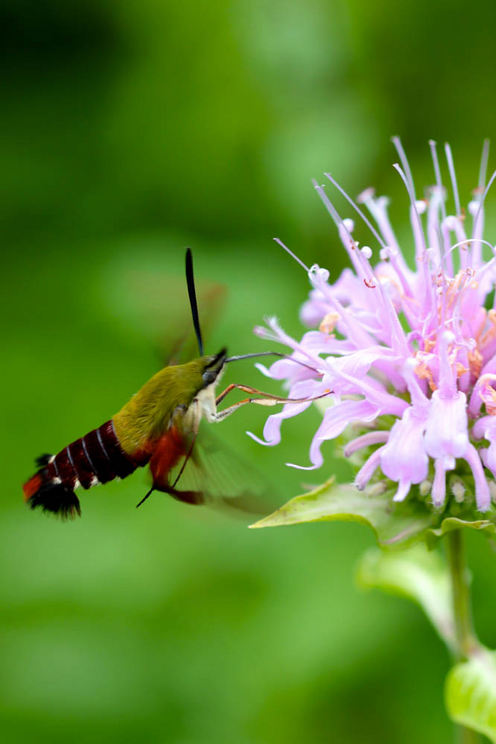
Clearwing hummingbird moth nectaring on wild bergamot
Wild bergamot is an herbaceous perennial; it grows 3-4 feet (.9-1.2 m) tall by indefinitely wide. It likes full sun and average to well-drained soils. Zones 3-8. The seeds are Lilliputian-tiny and must be planted on the surface of the soil and misted or bottom watered (to avoid burying them too deep in the soil). For most gardeners, it’s easier to purchase a plant or divide a bit of the root from a friend’s plant. Wild bergamot spreads vigorously by runners, in a similar fashion to mint. Plant it where it can go hog wild, or contain it with a rhizome barrier, as you would for mint or bamboo.
Gather the stems, leaves, and blooms at the peak of flowering and dry or use fresh.
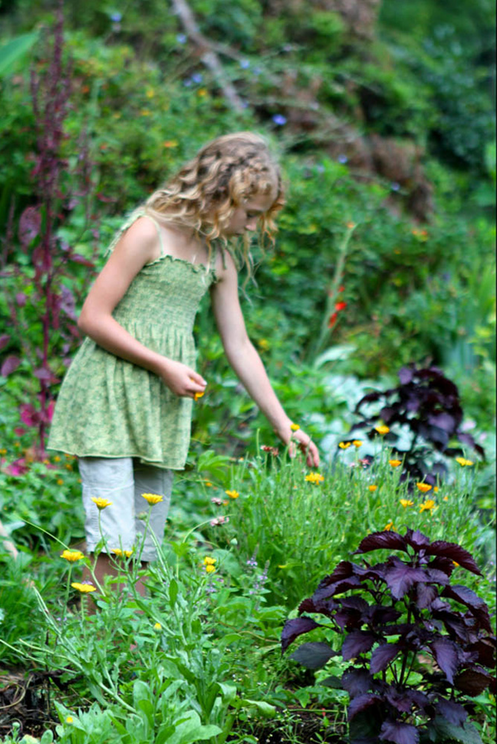
Harvesting calendula flowers amongst shiso, tulsi, passionflower, and California poppy
May your gardens be abundant and provide nourishment, healing and beauty in your lives!
For the rest of this article please go to source link below.
https://nexusnewsfeed.com/article/self-sufficiency/the-top-ten-medicinal-herbs-for-the-garden-how-to-grow-and-use-healing-plants
Thanks to: https://nexusnewsfeed.com






 Sat Mar 23, 2024 11:33 pm by globalturbo
Sat Mar 23, 2024 11:33 pm by globalturbo

